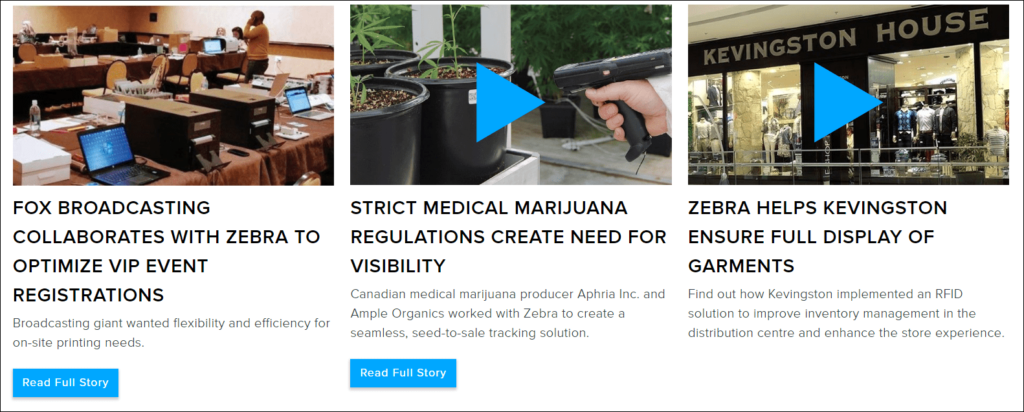Case studies are effective marketing and sales tools for converting prospects into leads and customers. They demonstrate how your products solved a real problem for a customer and show readers how they could have the same success. That’s why they’re often called “success stories,” too.
A compelling case study directly positions your products as the best solution for common problems experienced in your industry. It backs up your marketing claims with real results and shares quotes and stories from actual customers.
Many companies don’t invest in case studies because it takes time and effort to produce an effective one. If they do create them, they rely on traditional formats, which can be boring and not very engaging for your readers.
With a little preparation and creativity, you can profitably market your products with case studies that stand out from the crowd. We’ve gathered a few of the best ideas you can incorporate into your next case study and increase views, shares, and downloads. But first, let’s remind everyone what a case study is.
A Quick Primer on Case Studies
Case study expert Casey Hibbard explains case studies this way:
A case study captures the experiences and results of customers and drives home the impact of doing business with your organization.
Case studies, also known as customer success stories or success stories, examine a customer’s challenge or goal and explain how they solved it using your products or services. They’re a great way to showcase social proof for your company and typically are one to four pages in length, or about 800-1,500 words. More in-depth case studies can run up to 5-7 pages or 2,000+ words, but not usually more than that.
A compelling case study draws readers into the story, making them want to learn more about the product it features. It’s considered a “soft sell” format designed to lure your readers into requesting more detailed information from you. It should give just enough details that readers need to gain confidence in you and encourages them to make a definite decision about working with you.
What makes a case study such an effective piece of content marketing is that it’ll propel them deeper into your sales funnel. If you’ve mirrored the reader’s problem or situation successfully, it’ll be persuasive enough to move them closer to buying from you.
When done effectively, these successful stories can chronicle the positive impact you have had on your customers and drive prospects and leads to work with you.
The Traditional Format for Case Studies
Most case studies follow a similar format and flow.
1. The customer background and introduction.
2. The challenge the customer faced.
3. The solution they chose and why.
4. The results they enjoyed with the solution.
The problem-solution type of case study is one of the most popular, as it’s the easiest way to draw in readers. If they’re experiencing similar issues or obstacles, they’ll identify with the featured customer and relate to the chosen solution.
But as readers become more sophisticated, companies are looking for new ways to present their case studies. They want unique and new ways to tell their customers’ success stories that are engaging and compelling enough to get views and downloads.
Here are a few ways you can get creative with your case studies to improve engagement and downloads.
How to Get Creative with Case Studies
Use these ideas to create and publish more engaging and compelling case studies for your company.
Tell a Story
Storytelling is a big part of marketing and communication, even in business. Research shows people are innately drawn to stories and will engage with brands and products because of them.
Take a page from the hero’s journey in literature and take your readers through the journey of a key individual in your customer’s organization. For example, you could:
- Explain who the customer is and the challenges they faced.
- Talk about why their challenge demanded a resolution.
- Outline the options they looked at.
- Detail why your solution was the right one.
- Summarize their experience in implementing the solution, including any new setbacks or challenges they had to work through.
- Finally, talk about the happy ending and how the customer is better off today.
Storytelling helps readers see themselves in that “hero” and empathize with them. It makes it easier for readers to understand how your solution could work for them.
Weave in Quotes From a Variety of Sources
All case studies should include a healthy dose of quotes from your customers, but sometimes, companies create them without ever interviewing the customers. You think you know enough about the customer’s journey to be able to present it effectively. But you miss out on one of the most compelling parts of the case study: the voice of the customer.
Hearing directly from customers makes your case studies more engaging, credible, and trustworthy to prospects and leads. Make an effort to capture customer quotes from both your main point of contact and other users of your products. Often, you’re interviewing a senior manager or leader that might not have direct contact with your products, which is good. They can speak to the overall success and benefits of your products.
Quotes from everyday users are even more valuable because they can relate specific product features to benefits. For example, how Feature A helps them save time creating reports every week. A manager might only have a general idea of how much time they’re saving, while the employee can speak specifically about it.
Add the Human Touch
Your case study should create empathy within readers, so make sure to include emotion in them, even for stories about technology products or conservative industries. By revealing how customers felt about their challenges and their concerns when searching for a solution, you help forge a connection with the reader. Chances are, they’ve faced a similar problem or situation.
To get your customers talking about their emotions, ask open-ended questions like:
- Was there a specific event that led you to look for a new solution?
- Can you tell me an example of how this affected you and your employees?
- What does your workday look like now compared to before?
- What was going through your mind when that happened?
Use New Formats
Case studies don’t always have to be a 2-page PDF download. Use different media or formats in your case studies to increase engagement on various marketing and sales channels. For example, Zebra Technologies uses a combination of video and written case studies on its website for lead generation. The videos are free to watch, while the downloadable ones are gated. That’s an effective way to attract the attention of prospects and then convert them into leads.

Videos
Use video to showcase the people behind your customer’s brand and have them talk about how they used your products to overcome their obstacles or achieve their goals. Publish them on your YouTube channel and link to it where appropriate on your website.
Infographics
An infographic lets you creatively incorporate both visuals and text. Incorporate your company colors and logos into the infographics that you make to reinforce your brand with readers and anyone else they share it with. Make it easy for them to share with their networks on social media with download links and links to your social media accounts.
Podcasts and Audio
Record your next case study interview and have a candid conversation with your customer. This type of case study is potent because you’re revealing your customers directly to your audience, and they can relate more easily to them and the story.
Webinars
The same thing happens when you have live interviews with customers in a webinar session. Prospects and leads will see and hear about how a customer used your product or service to be more successful.
Talk About Results More Than Once
The whole purpose of a case study is to show readers the concrete benefits of working with you. They want to know the results your customers enjoyed working with you, and they want to see them more than once. Most case studies only include results in a section near the end.
Instead, make it easy for readers to see the results at a glance. Include them in multiple places in your case studies, such as the headline, a sidebar summary, and subheadings for written case studies.
You’ll have to get creative in more visual cast studies, but it is possible. Add them in pull quote boxes next to infographics or in transitions during a webinar. Have your interviewer incorporate them into the questions they ask customers during a podcast case study.
Readers always want to see hard numbers from customers, as they’re powerful persuaders. But if you can’t get your customer to give you any, get your customers to share with you how life is better now and capture that in quotes.
Hearing from customers is one of the most persuasive ways to convert prospects into leads and then customers. Case studies can help spread your customers’ voice to your readers, but only if you invest the time and effort to create them. A compelling case study backs up your marketing and sales claims with stories from real customers.
With a little organization, your company can create and publish engaging success stories and case studies. And not just the traditional case studies, but ones that reveal the human side of your customers and how you help them achieve their goals and overcome obstacles. All while you engage them with creative storytelling that they can’t help but read and act on.
DepositPhotos – case studies


